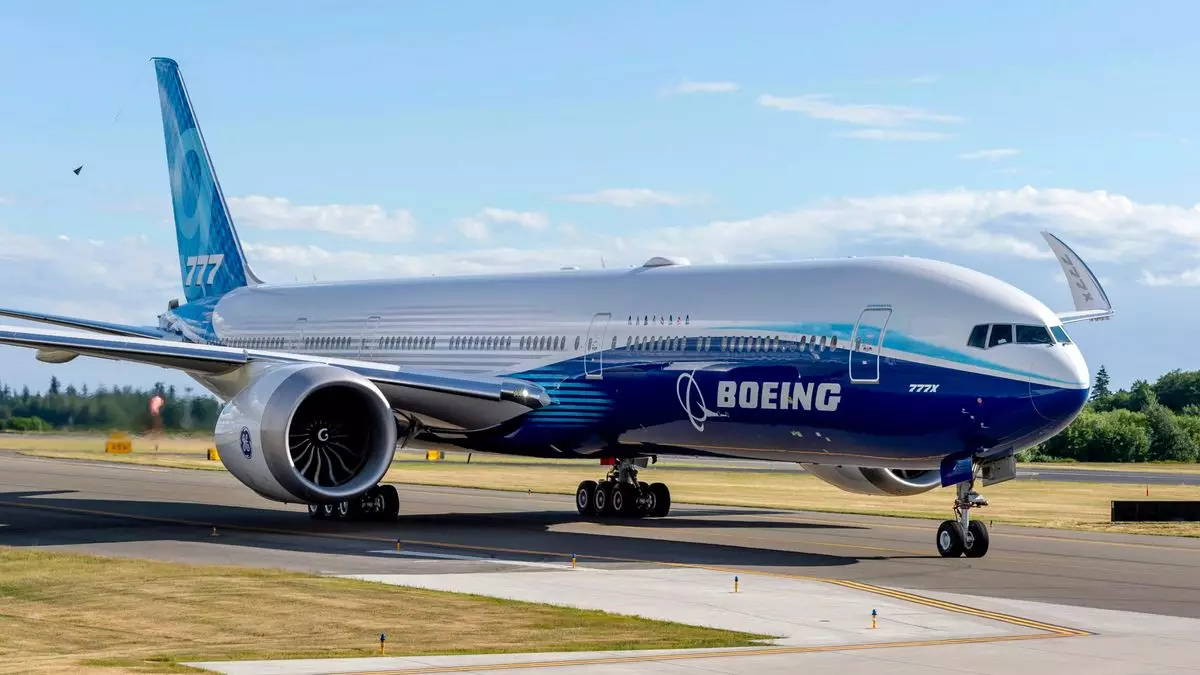Boeing’s recent announcement of impending layoffs, impacting around 17,000 employees or 10% of its workforce, underscores the severity of its ongoing financial struggles. Since 2019, the aerospace giant has recorded staggering losses exceeding $25 billion, a scenario that has compelled the company’s new CEO, Kelly Ortberg, to take drastic measures. With a global workforce of approximately 170,000, many situated in key manufacturing hubs like Washington and South Carolina, this decision speaks volumes about the challenges lurking beneath the surface of one of America’s most storied corporations.
Despite previous attempts to mitigate costs, including rolling temporary furloughs, the impending layoffs signify an urgent response to unrelenting operational challenges exacerbated by a lengthy strike involving about 33,000 union machinists. This strike has severely impacted production lines, particularly for the 737 Max—the cornerstone of Boeing’s commercial aircraft portfolio—leading to delays in new aircraft rollout and fiscal downturns.
The ramifications of the union strike cannot be overlooked. As compensation for delivered planes constitutes a significant portion of Boeing’s cash flow—often receiving over 50% of the sale price at the point of delivery—shutdowns in production pose a direct threat to the company’s immediate cash availability. The strike, which began on September 14, has only exaggerated Boeing’s predicaments, prompting the company to take unusual steps such as filing an unfair labor practices charge against the International Association of Machinists and Aerospace Workers.
In a time where turbulence might be expected in a traditional aviation sense, Boeing faces turbulent market conditions that seem to call for emergency structural adjustments. Upon reviewing the decisions made by Ortberg, it’s evident the company is navigating unprecedented hardships, potentially leading to campaign-style layoffs across various levels of personnel, including executives and managers. While workforce reductions may attempt to balance financial deficits, they simultaneously gravely impact employee morale and institutional stability during an already challenging era.
Further complicating matters, Boeing’s projected rollout of its all-new 777X aircraft has been postponed to 2026, a year later than initially planned—many analysts attribute this delay to the accumulation of past operational challenges. Moreover, the decision to cease production of the cargo version of the 767 by 2027 has added to concerns over capacity and future profitability.
The company faces additional scrutiny from federal regulators, particularly after receiving enhanced scrutiny from the Federal Aviation Administration (FAA). This scrutiny heightened following a troubling incident in January involving a panel malfunctioning mid-flight in an Alaska Airlines’ 737 Max. The fallout from the Max crashes—resulting in the loss of 346 lives—continues to haunt the company, as families of the victims advocate for more stringent accountability measures.
Coupled with this challenging environment, Boeing’s recently reported third-quarter financial results were concerning. The company recorded a cash burn of $1.3 billion over the quarter, alongside a loss of $9.97 per share—far exceeding the anticipated loss of $1.61. Noteworthy write-offs contributing to these losses included a $2.6 billion charge for 777X delays, alongside substantial costs associated with its defense and space programs.
Looking ahead, the path towards recovery for Boeing appears complex. With Ortberg at the helm, the need for robust recovery strategies undeniably exists. An outsider with extensive experience in the aerospace sector, he must leverage his expertise to revitalize Boeing’s output while simultaneously addressing union concerns and financial stability.
While Boeing still holds $10.5 billion in cash and marketable securities as of late September, the company’s future depends on its ability to navigate these turbulent waters effectively. As the ongoing industrial action and financial losses highlight, the corporate giant faces a moment of truth: adapt and evolve or face potential stagnation in an already competitive aerospace market. The stakes are high, and as Boeing endeavours to regain its footing, the challenges ahead will undoubtedly test the limits of both its operational strategy and workforce morale.


Napsat komentář